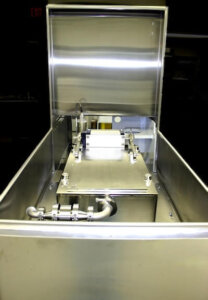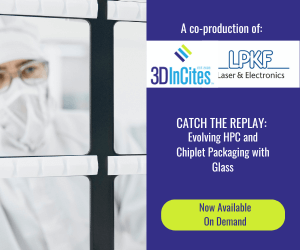 Akrion Systems’ vacuum prime and drying technology enables the use of a wet immersion method to introduce liquid chemicals or rinse water throughout the entire HAR feature prior to the oxide etching step. Pulling a vacuum below the saturated vapor pressure of water, draws liquid into the entire feature, enabling a uniform oxide etch.
Akrion Systems’ vacuum prime and drying technology enables the use of a wet immersion method to introduce liquid chemicals or rinse water throughout the entire HAR feature prior to the oxide etching step. Pulling a vacuum below the saturated vapor pressure of water, draws liquid into the entire feature, enabling a uniform oxide etch.
Testimonial
Surface preparation is important for 3D IC, particularly for resist removal after bumping and post TSV DRIE etch to remove contaminants preventing good film deposition for the barrier and seed layers. This includes watermarks, which is why thoroughly drying the surface of the vias is critical. Additionally, when introducing etch and cleaning chemistries into HAR vias (>10:1), the amount of air inside those structures increases and can create enough pressure, preventing chemistry penetration to the via bottom. For vias <10:1, conventional cleaning/etching methods are probably sufficient.
Prior to wet etch or cleaning, a vacuum “priming” step pulls remaining air out of the cavity to enable full wetting of the via so the etch/cleaning chemistries can do their job. Post clean, vacuum pulls away residual wet moisture. Without this, oxide remains at the bottom of both structures. Akrion Systems has installed and demonstrated that the vacuum drying module removed any remaining minute amounts of liquid at the end of a process. The advantage is improved process yield and CoO.
- Akrion Systems Website
- Date this Product was Introduced to the market: 10/15/2013
- Category Product is Being Nominated for: Manufacturing Equipment
- Technical Information for Vacuum Prime and Dry





















